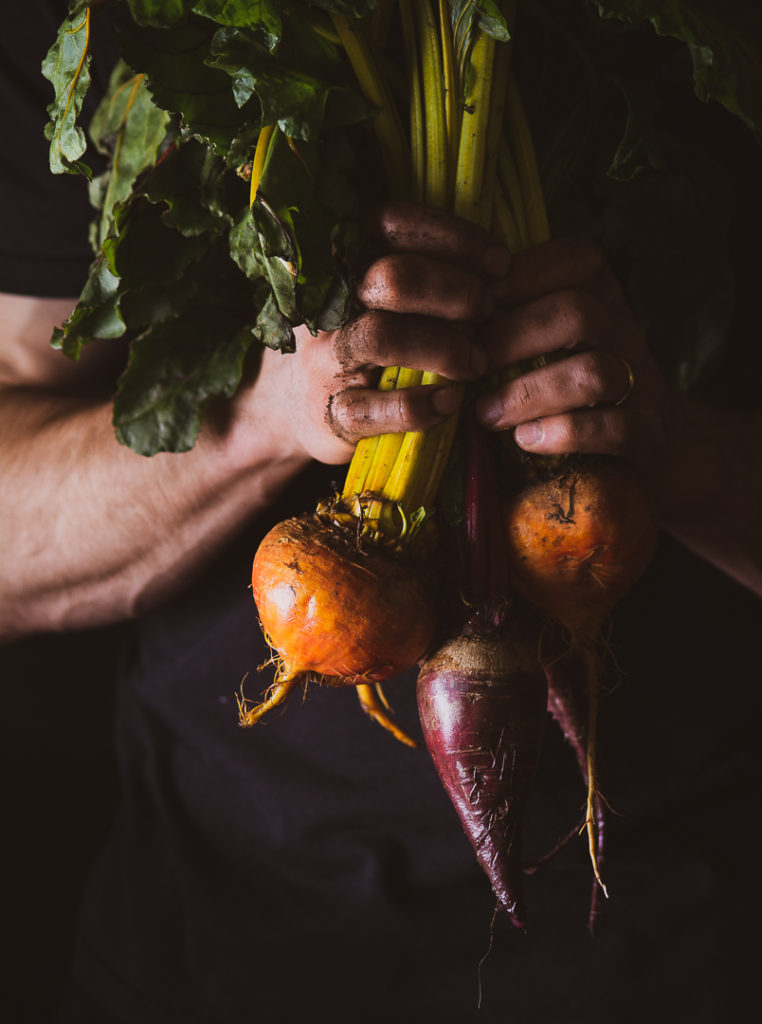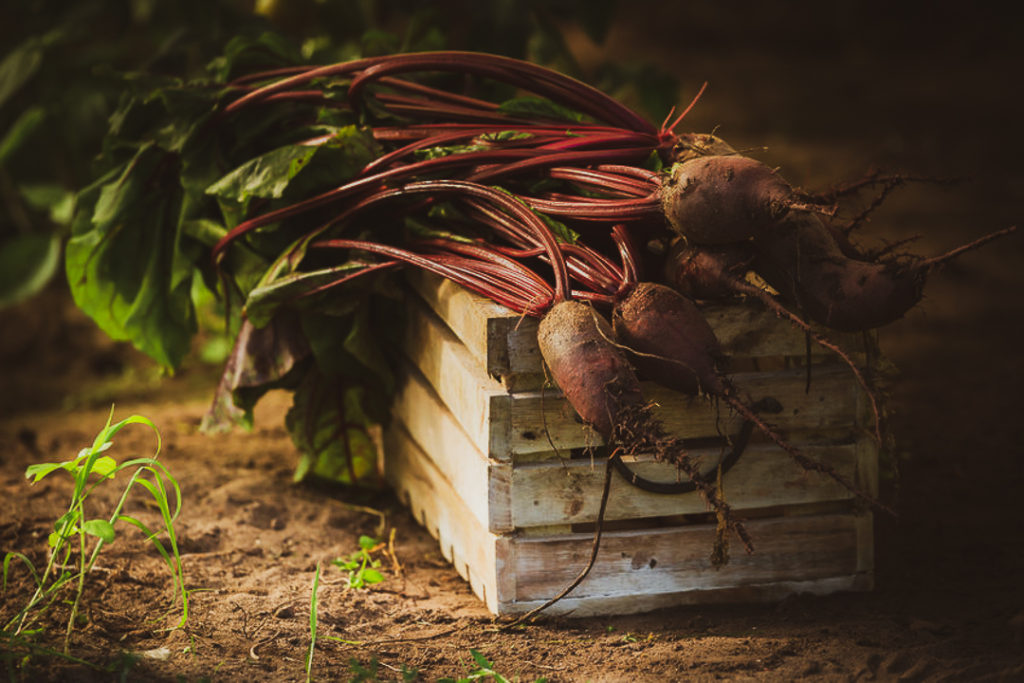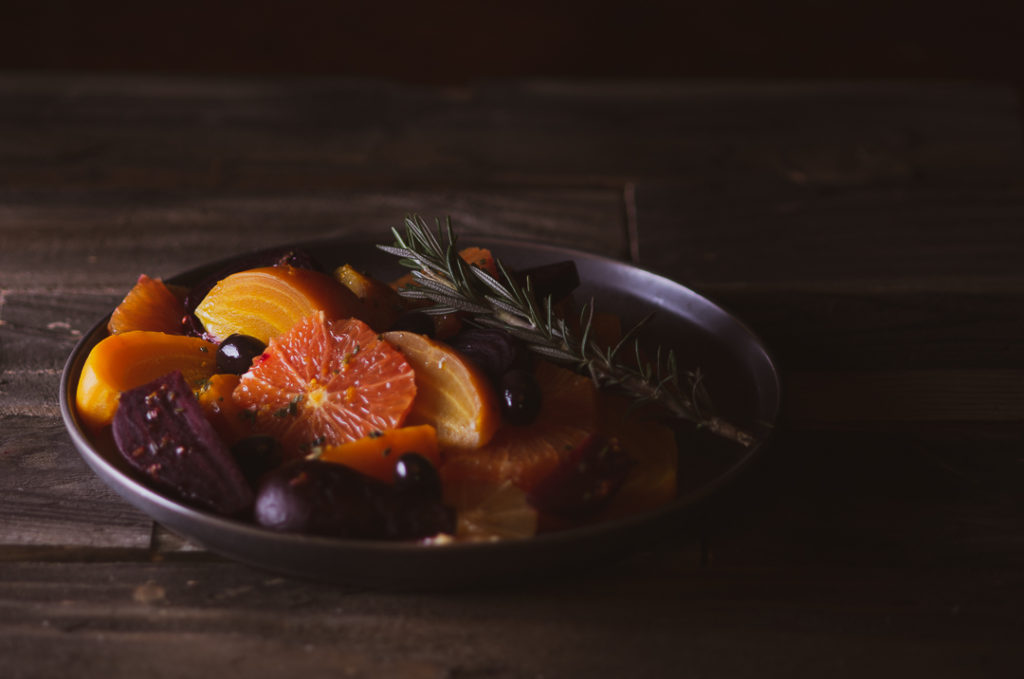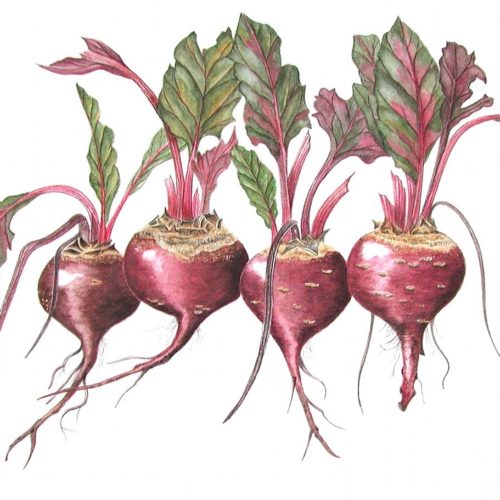Roasted Beet & Orange Salad/ The Smell of Rain

So often, it’s the little things in life that spark joy: the first sip of coffee on a Saturday morning; comfy pajamas put on still warm from the dryer; the smell of rain. Particularly during this time of year…when the promise of spring is just beginning to whisper to us if we’re paying attention– the first little whiff of that familiar scent makes most of us close our eyes and take a deep breath.
This is something that transcends cultures and time. It’s universal. I think it is pretty obvious why this is–it’s associated with fertility. It’s not actually the rain that smells good, however. What we’re smelling is the bacteria and minerals within the soil that are awakened after a period of drought by the rain. That particular aroma even has its own name; petrichor-from the ancient Greek “petros” meaning stone, and “ichor” meaning the fluid that flows in the veins of the gods. And humans are extremely sensitive to petrichor. Scientists say that most of us can detect it at 5-10 parts per trillion, which is the equivalent of one drop of water in an Olympic-sized swimming pool. I think it’s fascinating that this reaction to a scent is something that is a cultural imprint-passed on from our earliest ancestors.

So what makes up that amazing smell? One ingredient is geosmin. This word is also derived from Greek words meaning “earth” and “smell”. It’s an organic compound that is produced by certain bacteria that is found in soil. Geosmin produces the “earthy” smell that you get from a forest floor, a freshly picked mushroom, and, not surprisingly–beets.
Even though we may love the scent of geosmin, it turns out not all of us like the flavor. As a result, some people dislike beets because they feel it “tastes like dirt,” while others adore their earthiness. The same goes for other “earthy” food and drink like mushrooms, cheese, beer, wines and other fermented food. At a wine tasting, I was surprised to hear a sommelier describe a tasting note in a wine as “crushed concrete.” It didn’t immediately sound delicious to me, but my husband found it nostalgic and he hearkened back to falling down as a child and eating dirt–something I couldn’t relate to at all–or licking a rock, which for some reason–I could relate to! Anyway, I suppose that’s a flavor that might not appeal to everyone. For me, it’s sort of like the terroir of wine. I love that a wine will take on the flavor of where it’s grown. If you close your eyes and take a deep breath, you can imagine the place where it comes from and then taste that place on your tongue. You get that with beets as well–that sweetness that comes from the sugar in the root, but also the vague sweet and sour flavor from the organic matter in the soil.

For those of you who might not love that earthiness, combining beets with an acid such as vinegar or citrus will lighten that earthy aroma and flavor and bring out the sweetness. This recipe includes both, which makes this salad approachable for those who have previously sworn off beets.
And for those of us who do love the flavor as much as the smell, you can soon get into your garden and dig in to that soil. And apparently-you can take a taste if you’re so inclined! Or, maybe just skip eating dirt and enjoy the sweet earthiness of this salad instead.

Beet and Orange Salad
Ingredients
- 12 small or medium sized beets
- Extra-virgin olive oil
- salt and pepper
- red wine vinegar
- 5 Oranges-Moro, Cara Cara, or a combination of any oranges you wish
- 1/4 tsp very finely chopped rosemary optional
- Nicoise or another brined black olive optional
Instructions
- Preheat the oven to 375°F. Trim off the beet tops, leaving 1 inch of stem and the root intact. This will minimize the color of the beets leaching out. This is why, if you are using different colored beets, you should roast them in different pans. Wash them and put them in their roasting pans with about a half inch of water on the bottom. Cover and roast until tender, about 45 minutes. They are done when they can easily be pierced through with a sharp knife.
- Let the beets cool until you can handle them. Using a paper towel, rub skins off of the beets. Cut some of the beets into crosswise slices, and some into wedges. Be sure to keep the red beets away from the others at all times to avoid staining them. In their separate bowls, add a little vinegar and salt to your taste and set aside. Allow them to absorb the flavor, then taste again after about 10 minutes to see if they need additional vinegar and salt. Add olive oil to lightly coat.
- Cut the tops and bottoms off of four of the oranges. With a sharp knife, cut away the peel from top to bottom, ensuring that you remove all of the bitter membranes. Set the oranges aside.
- Make a vinaigrette by grating half of the zest from the remaining orange into a bowl. Squeeze about 3 tbsp of juice from the orange and add it to the bowl along with the rosemary-if using. Rosemary will really bring out the earthiness of this dish, so only use if you want to amplify that flavor. Add an additional teaspoon of vinegar and season with salt and pepper. Let macerate for 30 minutes, then add about 1/4 cup of olive oil. Taste and adjust for salt and acid to your liking.
- When ready to serve, carefully slice the peeled oranges crosswise into 1/4 inch rounds. Arrange them on a platter with any beets you are using that are not red. Carefully place the red beets last. Spoon the vinaigrette over the salad and garnish with some black olives, if using.
